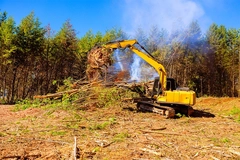
- Industry news
Industry news
- Category news
Category news
- Reports
- Key trends
- Multimedia
- Journal
- Events
- Suppliers
- Home
- Industry news
Industry news
- Category news
Category news
- Reports
- Key trends
- Multimedia
- Events
- Suppliers
Rabobank Publishes Prediction of Global Sugar Surplus for 2011/2012
21 Feb 2012

The company noted that, as we are approaching the halfway point of the 2011/12 international crop year, prices remain fairly well supported, largely owing to a perceived shortage of export availability against import demand in the early part of 2012. It is expected that by the second half of 2012, when the Indian and Thai harvests will be over and the new campaign in Brazil's Centre/South will be underway, the 2011/12 global surplus will weigh more heavily on international prices.
Feb 21 2012 --- In its first Sugar Quarterly of 2012, Rabobank projects a global sugar surplus of 6 million tonnes for the 2011/12 international crop year. While the contributions of the EU, Russia and the Ukraine to this surplus are already 'in the bag', as their respective harvests are over, the output expectations for key countries such as China, India and Thailand will take another month or two to confirm.

The company noted that, as we are approaching the halfway point of the 2011/12 international crop year, prices remain fairly well supported, largely owing to a perceived shortage of export availability against import demand in the early part of 2012. It is expected that by the second half of 2012, when the Indian and Thai harvests will be over and the new campaign in Brazil's Centre/South will be underway, the 2011/12 global surplus will weigh more heavily on international prices.
Initial projections for Brazil´s forthcoming Centre/South cane crop range from 500 million to 560 million tonnes. Rabobank's preliminary projection is 522 million tonnes. If the crop were to come in at the lower end of expectations, sugar and ethanol production would be virtually unchanged from last season. If the crop were to come in at the upper end of expectations, both sugar and ethanol production could increase significantly, with implications for both local ethanol prices and international sugar prices.
If Mitr Phol's offer for Maryborough Sugar Factory this month is successful, it will mean that 75% of Australia's sugar crushing capacity will be owned by offshore investors, up from just 16% in 2010.
Rabobank forecast that the main potential upside influence over the coming months is the Brazilian harvest. If it were to come in at the lower limit of expectations (i.e., virtually unchanged from the last harvest). The local ethanol market would, once again, be very tight, and even by maximizing sugar production again; the industry would be hard pressed to produce much more sugar than the 31.2 million tonnes produced last season.
If India or Thailand surprises the market with larger than expected output at the tail end of the season, or if early signs point to the cane crop in Centre/South Brazil being at the upper limit of current expectations there would likely be an upward revision of global production and export availability that would impact sentiment. Likewise, a strong tail end to the Chinese cane crop could also prompt some downward revision to estimates of Chinese import demand.
The company concludes: ‘(at the time of writing), sentiment regarding the macroeconomic and financial outlook appears to have improved slightly, markets remain vulnerable to any deterioration in the outlook which could prompt a sell-off of commodities in general.’
All content and features on this website are copyrighted with all rights reserved. The full details can be found in our privacy statement
Subscribe to our newsletters
By continuing to browse our site you agree to our Privacy Statement










